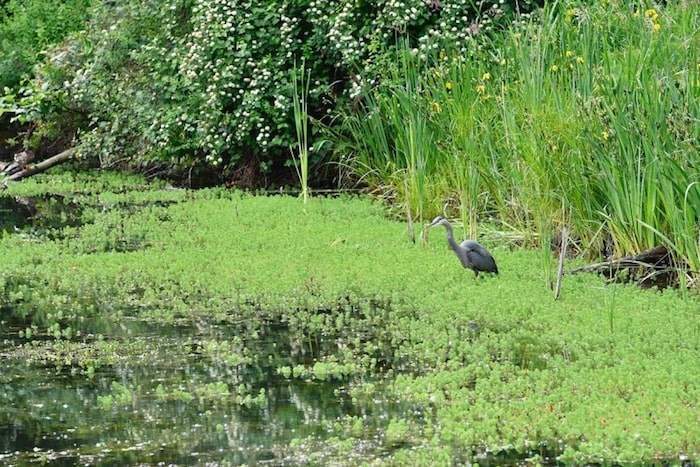The City of Burnaby is preparing for future floods by raising the dike along the Fraser River on the municipality’s southern edge.
City crews will start upgrading the 900-metre section of the dike in Fraser Foreshore Park this month and expect to be finished by the end of next year.
 A higher dike in Fraser Foreshore Park should withstand a 200-year flood, the City of Burnaby says. Photo by Jennifer Gauthier/Burnaby NOW
A higher dike in Fraser Foreshore Park should withstand a 200-year flood, the City of Burnaby says. Photo by Jennifer Gauthier/Burnaby NOW
May Phang, Burnaby’s manager of engineering projects, said the $6-million dike upgrade will raise the dike to 3.9 metres above geodetic elevation – a universal elevation used to measure such projects.
The dike section between Glenlyon and Byrne creeks, known as Reach 8, will be the last major upgrade to the Fraser River Dike. In recent years, the city has raised 4.4 kilometres of the dike.
The upgrade will bring Burnaby’s southern foreshore up to provincial standards that require it to be able to withstand a 200-year flood – meaning a flood that typically happens once every 200 years or has a 0.5 per cent chance of occurring each year.
The standard is set by taking into account expected freshet melts and rainfalls, Phang said. But, she said, climate change has forced the city to plan for worse flooding.
“If we talked about these events 30, 50 years ago, they look a lot different these days,” she said. “We're seeing trends in that we have higher intensity storm events but for a shorter duration, and longer, drawn-out dry spells.”
That’s why, Phang said, the current project will leave enough space and will be built with enough structural integrity to allow for a one-metre addition later on.
“All of that is part of the bigger analysis of how climate change is impacting our creeks, our watercourses and how it affects the rise and fall of these waves and elevations in water,” she said.
Asked why the dike wasn’t being built with that additional height now, Phang said, “It’s a matter of budget and also making sure that, when we build it to this level, it’s working properly.”
The upgrade will involve upgrading drainage, moving earth and building a new, paved path along the top of the dike once it’s complete.
The city plans to cut down approximately 33 trees – mostly cottonwood and alder – to make way for the larger dike.
“For a kilometre-long stretch, that's not too bad,” said Dave Ellenwood, the city’s director of parks, recreation and cultural services.
He said the city will far exceed its own replacement requirements by planting some 200 new trees – mostly maple and willow.
“The last thing we want to do is cut trees, but whenever we do cut a tree, we have a robust replanting program,” Ellenwood said.
The existing dike trail will be closed in sections over the roughly 18-month construction, but park users will be diverted to a parallel trail, Ellenwood said. The dike trail will be closed entirely when safety concerns necessitate it, he said.



